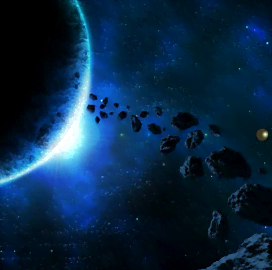
NEO tracking system
NASA’s ATLAS Can Now Track Near-Earth Objects Every 24 Hours
The Asteroid Terrestrial-Impact Last Alert System can now search the sky for near-Earth objects every 24 hours thanks to two additional ATLAS telescopes in South Africa and Chile.
Kelly Fast, Near-Earth Objects Observation program manager for NASA’s Planetary Defense Coordination Office, said the additional telescopes improve ATLAS’ NEO searching and tracking capabilities and allows officials to make better decisions on how to deal with potential threats.
The new sites allow NASA to monitor the sky in two different time zones. Specifically, the additional telescopes allow operators to scan the night sky whenever it is daytime in Hawaii, NASA said Tuesday.
ATLAS is an asteroid detection system that is funded by NASA and operated by the University of Hawaii Institute for Astronomy for NASA PDCO. It is composed of the new telescopes in South Africa and Chile and two telescopes in Haleakala and Maunaloa in Hawaii.
The ATLAS telescopes can create an image of the sky 100 times larger than the full moon in a single exposure. The system is designed to look for objects that are around 240,000 miles from Earth.
To date, the system has discovered over 700 near-Earth asteroids, 66 comets and the 2019 MO and 2018 LA very small asteroids that impacted Earth. On Jan. 22, the ATLAS-Sutherland site in South Africa detected 2022 BK, a 100-meter asteroid that is not expected to hit the Earth.
NASA has been developing NEO tracking and deterrence hardware. On Nov. 24, 2021, the space agency launched the Double Asteroid Redirection Test to see if hitting an asteroid will change its trajectory enough to prevent a potential impact on Earth.
The organization also started working on the NEO Surveyor, an infrared space telescope that is designed to discover potentially dangerous objects, including those that may hit the Earth during daytime.

Category: Space




